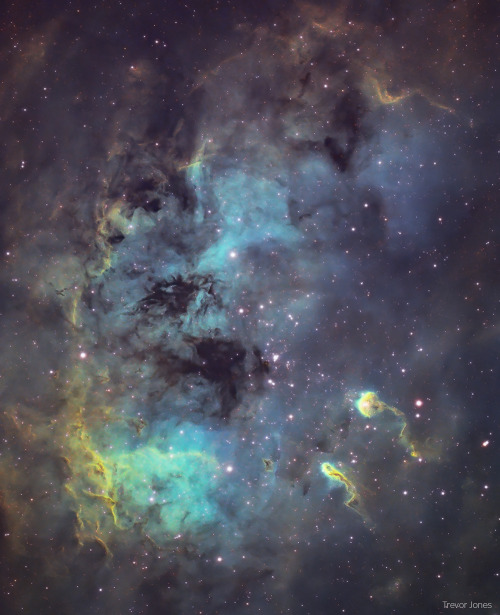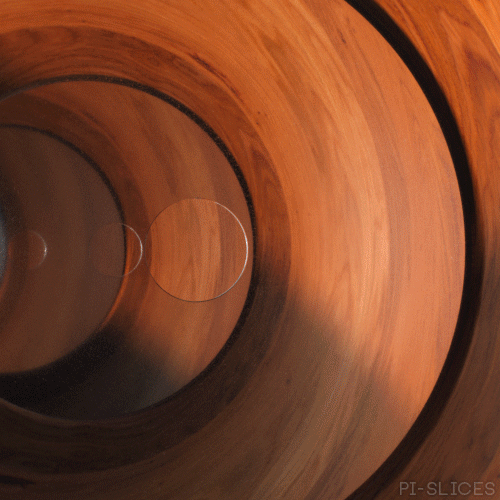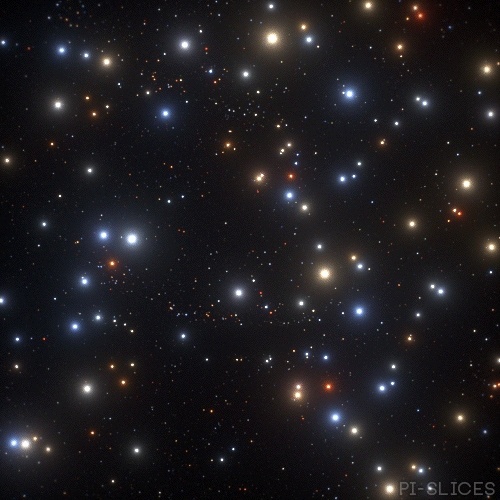Black Holes: Seeing The Invisible!
Black Holes: Seeing the Invisible!
Black holes are some of the most bizarre and fascinating objects in the cosmos. Astronomers want to study lots of them, but there’s one big problem – black holes are invisible! Since they don’t emit any light, it’s pretty tough to find them lurking in the inky void of space. Fortunately there are a few different ways we can “see” black holes indirectly by watching how they affect their surroundings.

Speedy stars
If you’ve spent some time stargazing, you know what a calm, peaceful place our universe can be. But did you know that a monster is hiding right in the heart of our Milky Way galaxy? Astronomers noticed stars zipping superfast around something we can’t see at the center of the galaxy, about 10 million miles per hour! The stars must be circling a supermassive black hole. No other object would have strong enough gravity to keep them from flying off into space.

Two astrophysicists won half of the Nobel Prize in Physics last year for revealing this dark secret. The black hole is truly monstrous, weighing about four million times as much as our Sun! And it seems our home galaxy is no exception – our Hubble Space Telescope has revealed that the hubs of most galaxies contain supermassive black holes.
Shadowy silhouettes
Technology has advanced enough that we’ve been able to spot one of these supermassive black holes in a nearby galaxy. In 2019, astronomers took the first-ever picture of a black hole in a galaxy called M87, which is about 55 million light-years away. They used an international network of radio telescopes called the Event Horizon Telescope.

In the image, we can see some light from hot gas surrounding a dark shape. While we still can’t see the black hole itself, we can see the “shadow” it casts on the bright backdrop.
Shattered stars
Black holes can come in a smaller variety, too. When a massive star runs out of the fuel it uses to shine, it collapses in on itself. These lightweight or “stellar-mass” black holes are only about 5-20 times as massive as the Sun. They’re scattered throughout the galaxy in the same places where we find stars, since that’s how they began their lives. Some of them started out with a companion star, and so far that’s been our best clue to find them.

Some black holes steal material from their companion star. As the material falls onto the black hole, it gets superhot and lights up in X-rays. The first confirmed black hole astronomers discovered, called Cygnus X-1, was found this way.
If a star comes too close to a supermassive black hole, the effect is even more dramatic! Instead of just siphoning material from the star like a smaller black hole would do, a supermassive black hole will completely tear the star apart into a stream of gas. This is called a tidal disruption event.
Making waves
But what if two companion stars both turn into black holes? They may eventually collide with each other to form a larger black hole, sending ripples through space-time – the fabric of the cosmos!

These ripples, called gravitational waves, travel across space at the speed of light. The waves that reach us are extremely weak because space-time is really stiff.
Three scientists received the 2017 Nobel Prize in Physics for using LIGO to observe gravitational waves that were sent out from colliding stellar-mass black holes. Though gravitational waves are hard to detect, they offer a way to find black holes without having to see any light.
We’re teaming up with the European Space Agency for a mission called LISA, which stands for Laser Interferometer Space Antenna. When it launches in the 2030s, it will detect gravitational waves from merging supermassive black holes – a likely sign of colliding galaxies!

Rogue black holes
So we have a few ways to find black holes by seeing stuff that’s close to them. But astronomers think there could be 100 million black holes roaming the galaxy solo. Fortunately, our Nancy Grace Roman Space Telescope will provide a way to “see” these isolated black holes, too.

Roman will find solitary black holes when they pass in front of more distant stars from our vantage point. The black hole’s gravity will warp the starlight in ways that reveal its presence. In some cases we can figure out a black hole’s mass and distance this way, and even estimate how fast it’s moving through the galaxy.
For more about black holes, check out these Tumblr posts!
⚫ Gobble Up These Black (Hole) Friday Deals!
⚫ Hubble’s 5 Weirdest Black Hole Discoveries
Make sure to follow us on Tumblr for your regular dose of space: http://nasa.tumblr.com.
More Posts from Epic-flight and Others

The Tadpoles of IC 410 : This telescopic close-up shows off the central regions of otherwise faint emission nebula IC 410, captured under backyard suburban skies with narrowband filters. It also features two remarkable inhabitants of the cosmic pond of gas and dust. Below and right of center are the tadpoles of IC 410. Partly obscured by foreground dust, the nebula itself surrounds NGC 1893, a young galactic cluster of stars. Formed in the interstellar cloud a mere 4 million years ago, the intensely hot, bright cluster stars energize the glowing gas. Composed of denser cooler gas and dust, the tadpoles are around 10 light-years long and are likely sites of ongoing star formation. Sculpted by stellar winds and radiation their heads are outlined by bright ridges of ionized gas while their tails trail away from the cluster’s central young stars. IC 410 lies some 10,000 light-years away, toward the nebula-rich constellation Auriga. via NASA

‘jump’

Young Stars of NGC 346 : The massive stars of NGC 346 are short lived, but very energetic. The star cluster is embedded in the largest star forming region in the Small Magellanic Cloud, some 210,000 light-years distant. Their winds and radiation sweep out an interstellar cavern in the gas and dust cloud about 200 light-years across, triggering star formation and sculpting the region’s dense inner edge. Cataloged as N66, the star forming region also appears to contain a large population of infant stars. A mere 3 to 5 million years old and not yet burning hydrogen in their cores, the infant stars are strewn about the embedded star cluster. In this false-color Hubble Space Telescope image, visible and near-infrared light are seen as blue and green, while light from atomic hydrogen emission is red. via NASA

Winter - 220102
View these celestial beauties taken by the Hubble Space Telescope and released as a set of views in a modern day “Messier Catalog."
Spotting comets was all the rage in the middle of the 18th century, and at the forefront of the comet hunt was a young French astronomer named Charles Messier. In 1774, in an effort to help fellow comet seekers steer clear of astronomical objects that were not comets (something that frustrated his own search for these elusive entities), Messier published the first version of his “Catalog of Nebulae and Star Clusters,” a collection of celestial objects that weren’t comets and should be avoided during comet hunting. Today, rather than avoiding these objects, many amateur astronomers actively seek them out as interesting targets to observe with backyard telescopes, binoculars or sometimes even with the naked eye.
Hubble’s version of the Messier catalog includes eight newly processed images never before released by NASA. The images were extracted from more than 1.3 million observations that now reside in the Hubble data archive. Some of these images represent the first Hubble views of the objects, while others include newer, higher resolution images taken with Hubble’s latest cameras.
Learn more: https://www.nasa.gov/content/goddard/hubble-s-messier-catalog
Make sure to follow us on Tumblr for your regular dose of space: http://nasa.tumblr.com.

Circular Windows - 221006

Pink Sparkles.
Twitter / Instagram / Gumroad / Patreon
KnownOrigin / SuperRare / OBJKT / Zedge

Proposal for GIF IT UP 2016

A selection orbs of the Solar System: Mercury, Venus, Earth (and Moon), Mars, Jupiter, Saturn, Uranus, Neptune. The spacecraft responsible for these images are as follows:
Mercury was photographed by Mariner 10.
Venus was imaged by the Magellan spacecraft’s radar.
Earth and its Moon were photographed by Galileo.
Mars Global Surveyor took the image of Mars.
Jupiter was photographed by Cassini as it traveled to Saturn.
Saturn, Uranus and Neptune images were taken by the twin Voyager spacecraft.
(NASA)
-
 marci-redfield liked this · 4 weeks ago
marci-redfield liked this · 4 weeks ago -
 ginkgo-leaves reblogged this · 3 months ago
ginkgo-leaves reblogged this · 3 months ago -
 vortikose liked this · 1 year ago
vortikose liked this · 1 year ago -
 blackholesunshineandrainbows liked this · 1 year ago
blackholesunshineandrainbows liked this · 1 year ago -
 itsgerges reblogged this · 1 year ago
itsgerges reblogged this · 1 year ago -
 itsgerges liked this · 1 year ago
itsgerges liked this · 1 year ago -
 stitchlingbelle reblogged this · 1 year ago
stitchlingbelle reblogged this · 1 year ago -
 reecewykes liked this · 1 year ago
reecewykes liked this · 1 year ago -
 plougasthreadnew liked this · 1 year ago
plougasthreadnew liked this · 1 year ago -
 reolitreace liked this · 1 year ago
reolitreace liked this · 1 year ago -
 cozy-queen-of-hats liked this · 1 year ago
cozy-queen-of-hats liked this · 1 year ago -
 pazzesco reblogged this · 1 year ago
pazzesco reblogged this · 1 year ago -
 serrantsaloto reblogged this · 2 years ago
serrantsaloto reblogged this · 2 years ago -
 serrantsaloto liked this · 2 years ago
serrantsaloto liked this · 2 years ago -
 jameswebb-discoveries reblogged this · 2 years ago
jameswebb-discoveries reblogged this · 2 years ago -
 d123456789d123 reblogged this · 2 years ago
d123456789d123 reblogged this · 2 years ago -
 michaellumos liked this · 2 years ago
michaellumos liked this · 2 years ago -
 sharicat liked this · 2 years ago
sharicat liked this · 2 years ago -
 floater2022 liked this · 2 years ago
floater2022 liked this · 2 years ago -
 tigerstripes1227 liked this · 2 years ago
tigerstripes1227 liked this · 2 years ago -
 bibottomnudist liked this · 2 years ago
bibottomnudist liked this · 2 years ago -
 freedomfighterdash liked this · 2 years ago
freedomfighterdash liked this · 2 years ago -
 intothewildsstuff liked this · 2 years ago
intothewildsstuff liked this · 2 years ago -
 roguemortal reblogged this · 2 years ago
roguemortal reblogged this · 2 years ago -
 whatareyoureallyafraidof reblogged this · 2 years ago
whatareyoureallyafraidof reblogged this · 2 years ago -
 mona-vainy liked this · 2 years ago
mona-vainy liked this · 2 years ago -
 starstark liked this · 2 years ago
starstark liked this · 2 years ago -
 umbler22 liked this · 2 years ago
umbler22 liked this · 2 years ago -
 felicigra liked this · 2 years ago
felicigra liked this · 2 years ago -
 muundaanee liked this · 2 years ago
muundaanee liked this · 2 years ago -
 helder-meireles liked this · 2 years ago
helder-meireles liked this · 2 years ago -
 abyssus-abyssum-invocat-m-d liked this · 2 years ago
abyssus-abyssum-invocat-m-d liked this · 2 years ago -
 dedarising liked this · 2 years ago
dedarising liked this · 2 years ago -
 07-passerby liked this · 2 years ago
07-passerby liked this · 2 years ago -
 river-pebble liked this · 2 years ago
river-pebble liked this · 2 years ago -
 doniddb-blog reblogged this · 2 years ago
doniddb-blog reblogged this · 2 years ago -
 doniddb-blog liked this · 2 years ago
doniddb-blog liked this · 2 years ago -
 filkovaariik liked this · 2 years ago
filkovaariik liked this · 2 years ago

